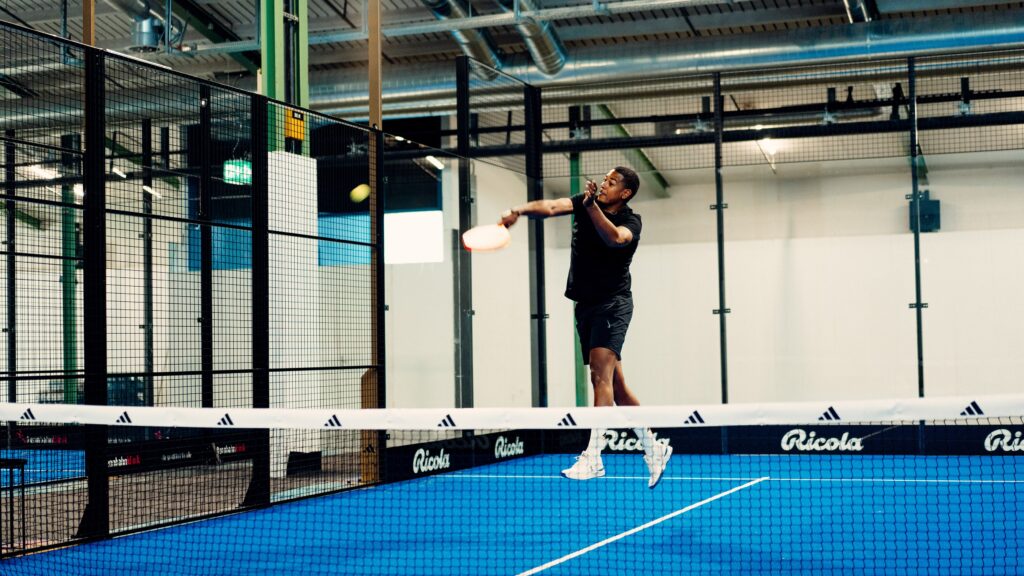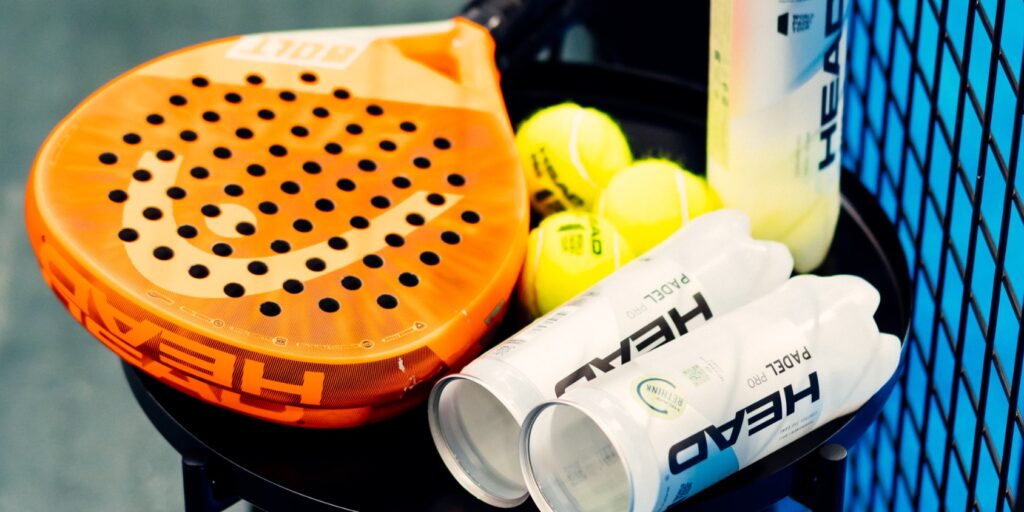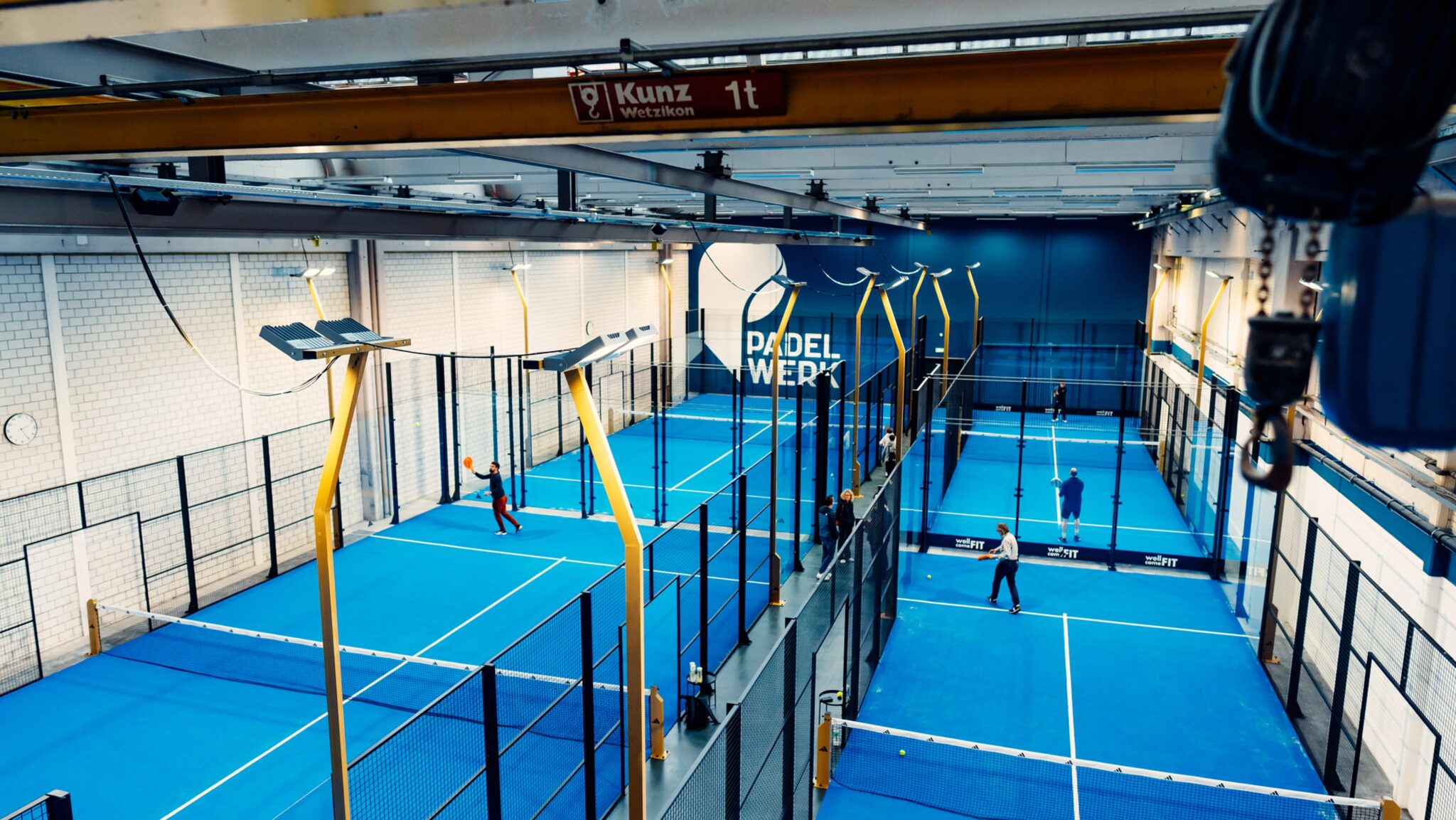Padel is attracting more and more people worldwide and is the ideal sport for anyone who loves a dynamic pace, having fun and team spirit. Whether you’ve never held a racket before or already have some tennis or squash experience, padel is easy to learn and fun to play. Here are the most important basics so that you can get started straight away.
What is padel anyway?
Padel is a mixture of tennis and squash played on a smaller court. The special thing is that the boundaries of the court consist of glass walls that can be incorporated into the game. The ball stays in play for longer, which makes for exciting and varied rallies.
Padel is played by doubles teams, i.e. two on two, or one on one on singles courts. The emphasis is on fun and teamwork, and even beginners can quickly get into the game.

The most important padel rules at a glance
Padel has a simple set of rules that are easy to understand. Here are the most important points so you can get started right away:
1. The serve: the opening of the game
- The serve must be played below the hips and served into the opponent’s diagonal service box.
- The ball must hit the ground once before the serve.
- The ball can hit the glass wall on the serve, but not the fence. A correctly executed serve bounces on the ground in the opponent’s service box and may then touch the glass wall, but not the fence on the side.
- In the event of a fault, there is a second serve – similar to tennis.
2. The rally: dynamics and strategy
- The ball may also touch the glass wall after hitting the ground before being returned. The ball can also be played off the fence during a rally.
- The ball may hit the ground a maximum of once before it must be returned. If the ball touches the ground twice, the point is awarded to the opponent.
- Players can also return the ball directly from the air (volley) or after contact with the glass wall.
3. Scoring like in tennis
- The points are scored the same way as in tennis: 15, 30, 40 and game. If it comes to a deuce (40:40), the next point (“golden point”) decides the game.
- A match is usually best-of-three sets. A set is decided when a team wins six games by a margin of at least two games.
4. Court boundaries and glass walls
- The glass walls and the fence around the court are an integral part of the game. A ball that touches the glass wall after hitting the ground remains in play.
- However, if a ball hits the fence or glass directly without first touching the ground, this is a fault.
5. Fair play comes first
- As padel is often played in a recreational and hobby environment, the focus is on having fun and socialising. Fair play is expected and appreciated.

What equipment do you need?
Padel is not only easy to learn, but also uncomplicated to in terms of equipment:
- Rackets: A padel racket is smaller and lighter than a
- tennis racket. It has no strings, but rather solid hitting surface with holes that allow optimal control.
- Balls: The balls are similar to tennis balls, but are slightly softer and slower.
Shoes: Non-slip sports shoes with good grip are ideal, especially for the artificial grass used on most padel courts.
Did you know? Padelwerk provides rackets and balls from HEAD Padel free of charge at all locations.
Why is padel so popular?
Padel is a sport for everyone. It is not just a question of strength or technique, but above all about tactics and teamwork. This makes the sport particularly accessible for beginners. What’s more, you can play a real match with friends, family or colleagues after the first few minutes – it’s a real buzz!
Your introduction to the world of padel
Curious? At Padelwerk, there are many courts available for you to try out this exciting sport for yourself. Book your first lesson now and discover why padel is the fastest growing sport in the world.
Fancy giving padel a try?
Visit us at Padelwerk and start your padel journey in a relaxed and friendly atmosphere. Our beginner offers and loaner rackets make it particularly easy to get started.
